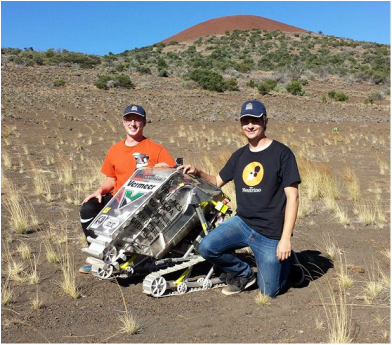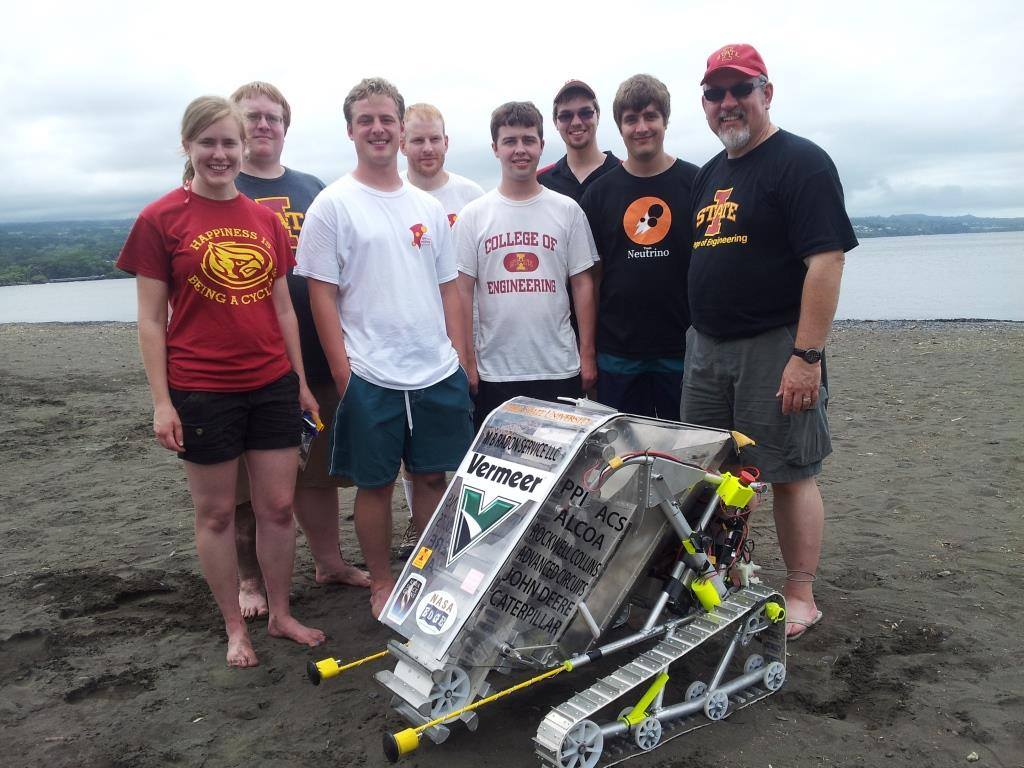NASA Mining - 2014
|
1st Place – Caterpillar Autonomy Award (First in history of competition)
2nd Place – STEM Outreach 3rd Place – Team Spirit Award 3rd Place – Slide Presentation and Demonstration 3rd Place – Pit Pride Award Building on the backbone on the prior year's success the 2014 NASA Robotic Mining Competition year was one of the most exciting for the team. HERMES II improved on the previous year's design by streamlining the build and construction of the rover, while also improving the capabilities. Going into the build season the decision was made to outline and improve on the prior year's shortcomings: -Difficult construction -(relatively) heavy -Failure to achieve autonomy -Difficulty dumping collected regolith On all of these points improvements were made. Forgoing the composite hopper saved us weight in addition to comfortably allowing us to turn the hopper into a structural component of the digging conveyor. Adding robustness to the sensor package allowed us to build off the prior year's work on autonomy and successfully accomplish the first fully autonomous run in the history of the competition. When designing the rover we opted for a double actuator setup over the single actuator from the year prior, increasing complexity but allowing us to reach a much higher dump angle. news.iastate.edu/news/2014/05/16/spacemining |
|
|
|
PISCES PRISM Competition
|
1st Place – Design and Innovation Award
2nd Place – On-site Mining Award Success at the primary competition led to our invitation to the PISCES PRISM Competition in Hawaii. Sharing the same test facilities on Mauna Kea that NASA utilized for testing Apollo era rovers and EVA activities, the competition location was rife with historic context. The Volcanic ash on site is the most similar naturally occurring simulant to lunar and mars regolith. On site we were able to push the rover harder than we ever had prior. The compact ground we were digging in damaged it's fair share of buckets through the competition however we had a successful showing among the teams that were invited to the event. |

